Incremental Writing: No More Writer's Block

Photo by Steve Johnson on Unsplash
What is Incremental Writing
Incremental Writing is just like… Incremental Reading. Duh I know. But if you understand Incremental Reading it’s really just the writing version: instead of reading an extract you write on it.
Both Incremental Reading and Incremental Writing involves active interaction: you actively engage with the material. In Incremental Writing, when you encounter an extract (sub-session), you:
- Continue develop the idea (i.e., expand, elaborate, clarify the content)
- Move the extract (the idea) to a more relevant and suitable part (another session or even article)
- Delete the content
- Don’t know what to do with it so hit “Next” and engage with it next time
Incremental Writing: How I Write My Articles
All my articles are written incrementally. This part details my Incremental Writing process. Again, Your Mileage May Vary.
#1. When Inspiration Hits
For every article, it all starts with an idea. I open a new Vim session with vim-anywhere. At this point my goal is to just pour down everything into one giant article, possibly without any organization whatsoever, like the roughest draft of the first draft. When I’m out of idea or done, I stop, copy and paste everything back to SuperMemo as a new Topic (Article). Then let SuperMemo decides when I’ll brush up on it again.
#2. Brushing Up the Roughest Draft
When it comes up on the Outstanding Queue, I start to edit. A few possible courses of action:
- For irrelevant, random or isolated fragments I’d extract it and put it to my “Fragment” folder
- If a particular idea has enough substance and content, I’d extract and give it a reference. For each sub-idea I would again, extract it, making it a sub-session.
- If I do finish extracting, sorting and organizing everything from the parent (original) article in one particular session, I would dismiss it.
Then again, I’d let the algorithm decide when I work on which parts and what articles.
#3. Organizing and Developing Content
Then comes the more difficult part of organizing, developing and elaborating ideas:
Different drafts may have the same idea or theme that should be grouped together, so when SuperMemo presents me with a particular part, I’d remember I’d written something similar and so I’d combine the two into one.
Sub-session Turned Into a Full-blown Article
Sometimes, when I write too much for a sub-session, I would further divide it into sub-sub-session with a sub-sub-title. It might even branch off from the original article and become an article of its own.
With the power of spacing and interleaving, it’s immensely easier (relatively of course) to expand on an idea and associate different ideas with it. Whenever you see a part II of my article, it’s because I’d written too much for a sub-session that I decided to split it into two independent articles. For example, the following three articles all originated from the same sub-folder. At one point I realized it’s too long and didn’t fit under one title, so I split it into three separate articles:
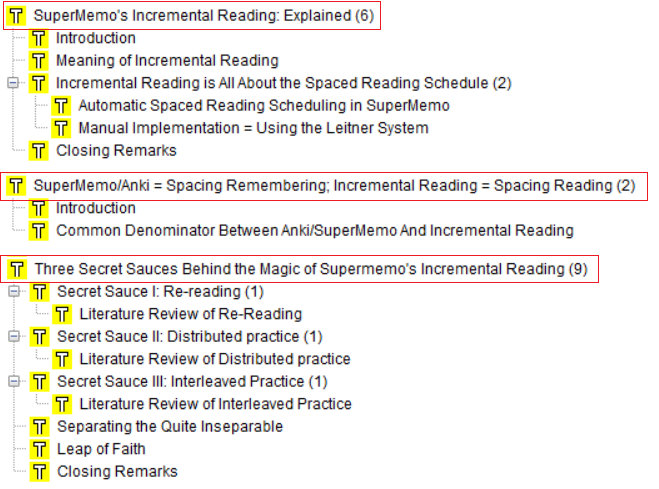
#4. Finishing Touch
At this point, with enough content for an idea, it’s a matter of final organization: 1 article with 4 sub-sessions or 2 articles with 2 sub-sessions each, determining by relevance of content. Finally, it’s just about adding references and pictures before publishing.
Knowledge Tree for this article:
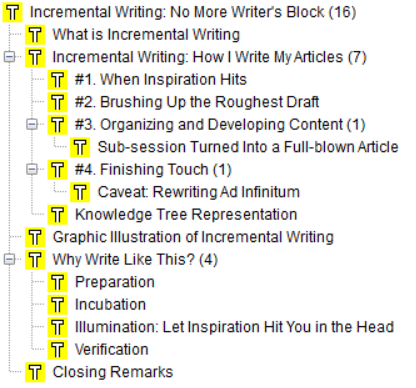
Essentially (and ideally), the Knowledge Tree represents and corresponds with the content organization: each extract represents its article’s session. But in reality, my writing process is a lot messier. Here’s the real Knowledge Tree that doesn’t quite look the same in the final outcome (the one you’re reading now):
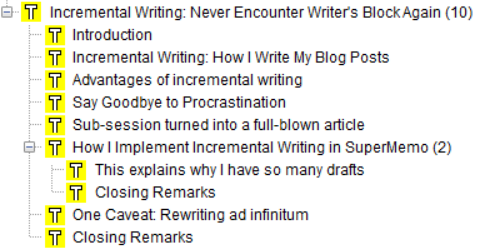
So very different content organization: new sessions were added while some sessions were gone. The title is changed as well.
Caveat: Rewriting Ad Infinitum
Parkinson’s law: Work expands so as to fill the time available for its completion. Source
The above process of pouring out one idea, brushing it up, and doing the finishing touch may take weeks or even months (hence the term Incremental Writing). I have the luxury of spending (aka procrastinating) months or even years before publishing any particular article (just look at the initial draft and published dates).
Since SuperMemo’s algorithm is expansive (it can span across weeks and months) and if you have hard deadlines, you may need to take a more restrictive approach: manually controlling the review dates.
Graphic Illustration of Incremental Writing
PS: Also applicable to explain the concept of Incremental Reading
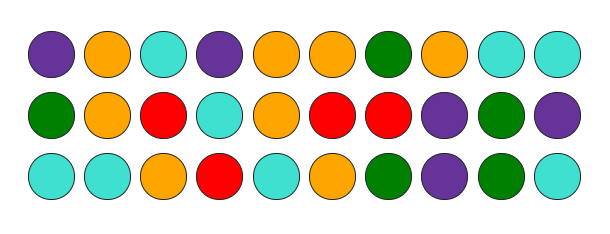
There are 30 circles (each circle represents one day, so 30 days in total). Each color represents the same article that you work on each day. Suppose you’re working on 5 articles (hence 5 colors) simultaneously. So the above represents a month’s work. The uneven number of colors reflects the articles' priority: some articles are more important so you work on them more frequently, but they are all spaced regardless.
If we zoom in and isolate each color:
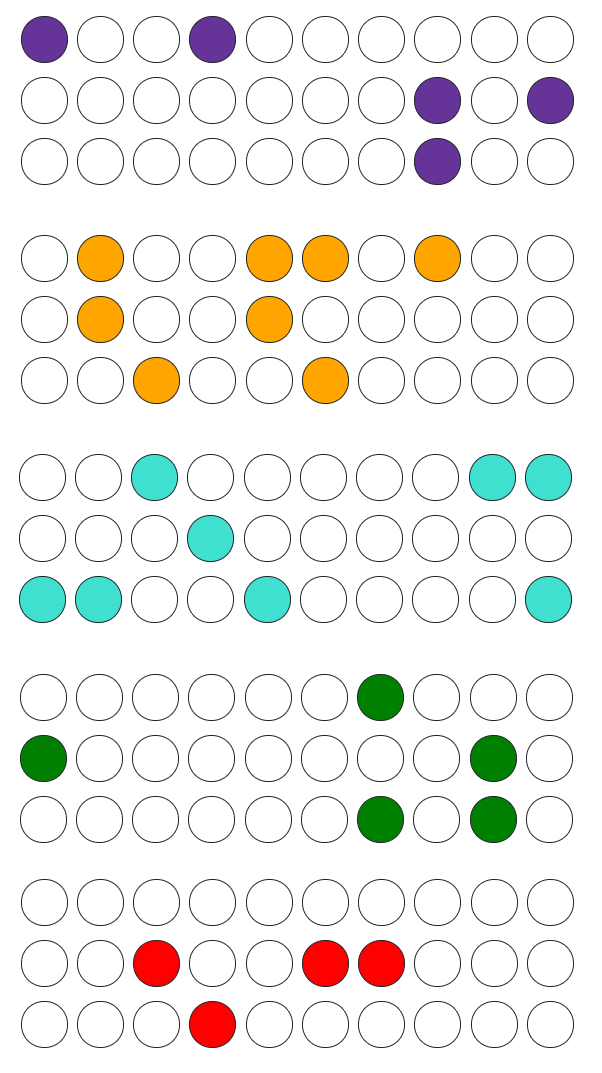
A more traditional approach would be:
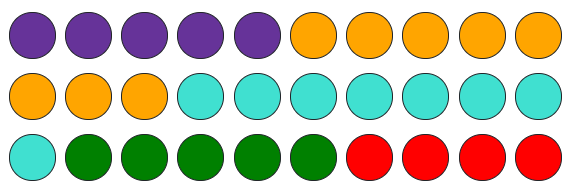
Why Write Like This?
The French mathematician Henri Poincaré, […] “Often when one works at a hard question, nothing good is accomplished at the first attack,” Poincaré had observed. “Then one takes a rest, longer or shorter, and sits down anew to the work. During the first half hour, as before, nothing is found, and then all of a sudden the decisive idea presents itself to the mind.
PS: All quotes from this session are from How We Learn
The duration between two writing sessions for the same article is like what Graham Wallas describes as “stages of control” for creative problem solving:
Preparation → Incubation → Illumination → Verification
Preparation
Preparation includes not only understanding the specific problem that needs solving and the clues or instructions at hand; it means working to a point where you’ve exhausted all your ideas. You’re not stalled, in other words. You’re stuck—ending preparation.
Having drafts and ideas in SuperMemo is like planting the seeds at the back of my mind. As described in “#1. When Inspiration Hits”, at any point during this initial writing process, if I’m stuck I’d just stop writing. I’d never stare at the blinking cursor with a blank mind.
Incubation
Wallas ventured a guess about what was happening [during this period]: “Some kind of internal mental process is operating that associates new information with past information. A type of internal reorganization of the information seems to be going on without the individual being directly aware of it.” That is to say, the mind works on the problem off-line, moving around the pieces it has in hand and adding one or two it has in reserve but didn’t think to use at first.
Such incubation period can be seen from the spacing of time between two writing sessions for the same article. Again, take a look at the above isolated circles: in most cases there are days (or even weeks) in between before working on the same article again. The idea builds up, simmers and grows (maybe subconsciously).
Illumination: Let Inspiration Hit You in the Head
This is the aha! moment, the moment when the clouds part and the solution appears all at once. Here’s Poincaré again, on the Fuchsian functions problem giving up its secrets: “One evening, contrary to my custom, I drank black coffee and could not sleep. Ideas rose in crowds; I felt them collide until pairs interlocked, so to speak, making a stable combination. By the next morning … I had only to write out the results.”
Since there are days or even weeks before writing on the same part again, when I eventually get back to it, I always greet it with a fresh pair of eyes. With a fresher perspective on the topic, it’s easier to refine the sentences, coming up with better elaboration, adding more relevant analogies and so on.
From personal experience, working consecutively for days for the same article doesn’t yield much gain in terms of quality. This is the traditional approach depicted above. My mind is saturated with the article’s content, like a balloon so full it’s on the brink of bursting. However, letting time pass before writing on the same part again means deflating the balloon a bit, so I can fill it with something better and fresh.
Sometimes I don’t even remember I’d written such content. In this regard I think forgetting is for the better: getting confused by my own words prompts me to rewrite it for better explanation and delivery:
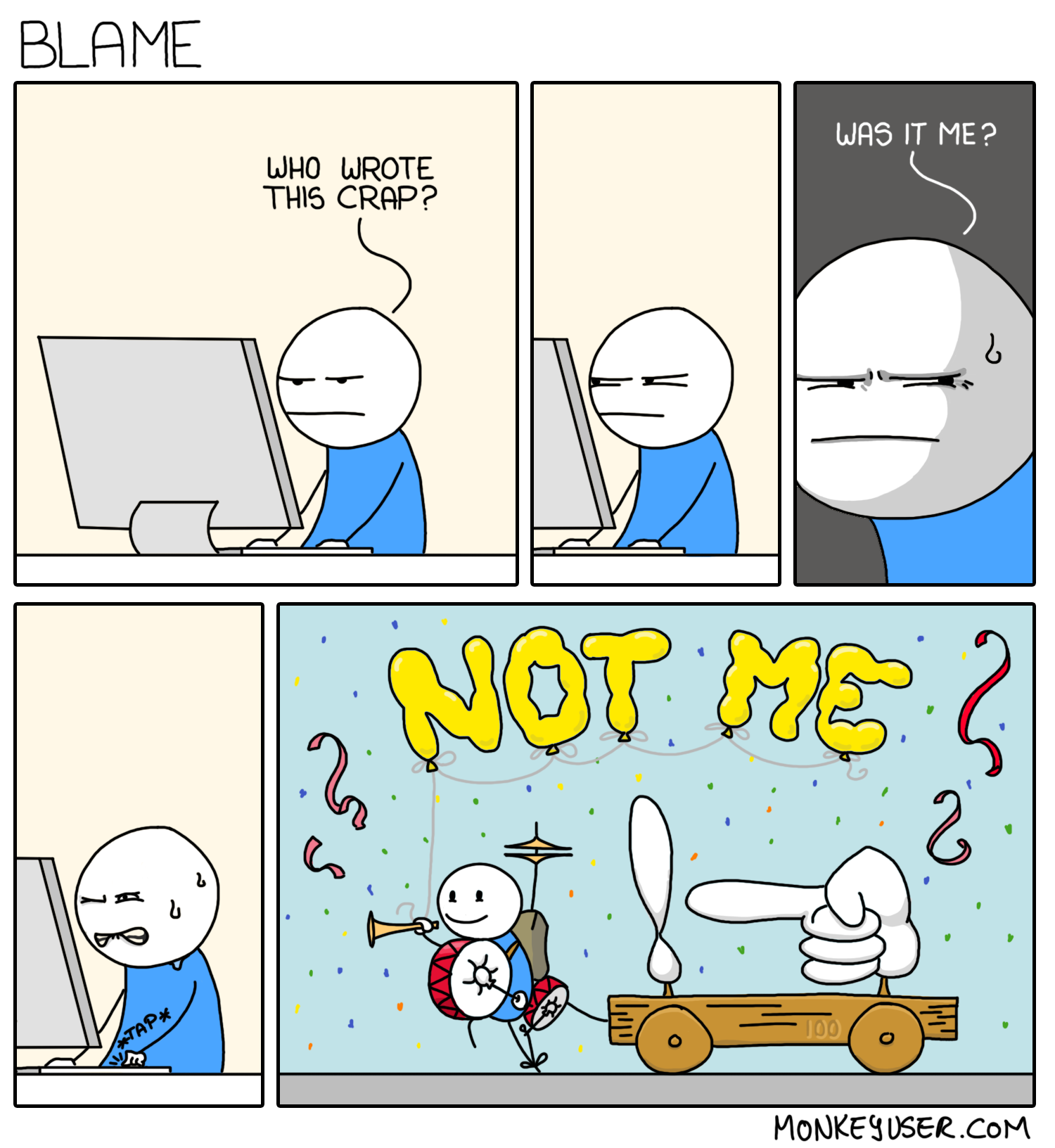
Writing has a lot to do with creativity. Whether you prioritize your articles, your Outstanding Queue will be interleaved (mixed) with different sessions of different articles. Ideas will mix and match.
If I’m blank for a particular part of an article, I just hit Next and wait to try again next time SuperMemo shows it to me. Sometimes I’m still blank; other times ideas just keep rushing I can’t stop typing. This is like enforced creativity: I’m guaranteed to produce.
Verification
Checking to make sure those results, indeed, work.
For the sake of Incremental Writing it’s about reading your own words again so that they make sense.
Since Incremental Writing is similar to Incremental Reading, you may refer to Three Secret Sauces Behind the Magic of SuperMemo’s Incremental Reading for more details.
Closing Remarks
No matter how much I believe in this writing method, I don’t think it will become popular, or if some professional writers would adopt it (though I sincerely hope so). I’m sure some may write in this fashion, but unlikely in SuperMemo (just like Michael Nielsen doing Incremental Reading with Anki)
I never thought I’d become a writer (not even a blogger), not to mention employing such a novel (and dare I say, ground-breaking) writing method. I have no way to verify its effectiveness. The fact that the creator himself has produced so much content in supermemo.guru and help.supermemo.org may be another proof of its effectiveness. Without a doubt however, without SuperMemo there is zero chance I’d have written over 200k words. Imagine the possibilities for the world when a noob like me can produce everything you see in this blog.
All hail SuperMemo and Incremental Learning (Reading and Writing).